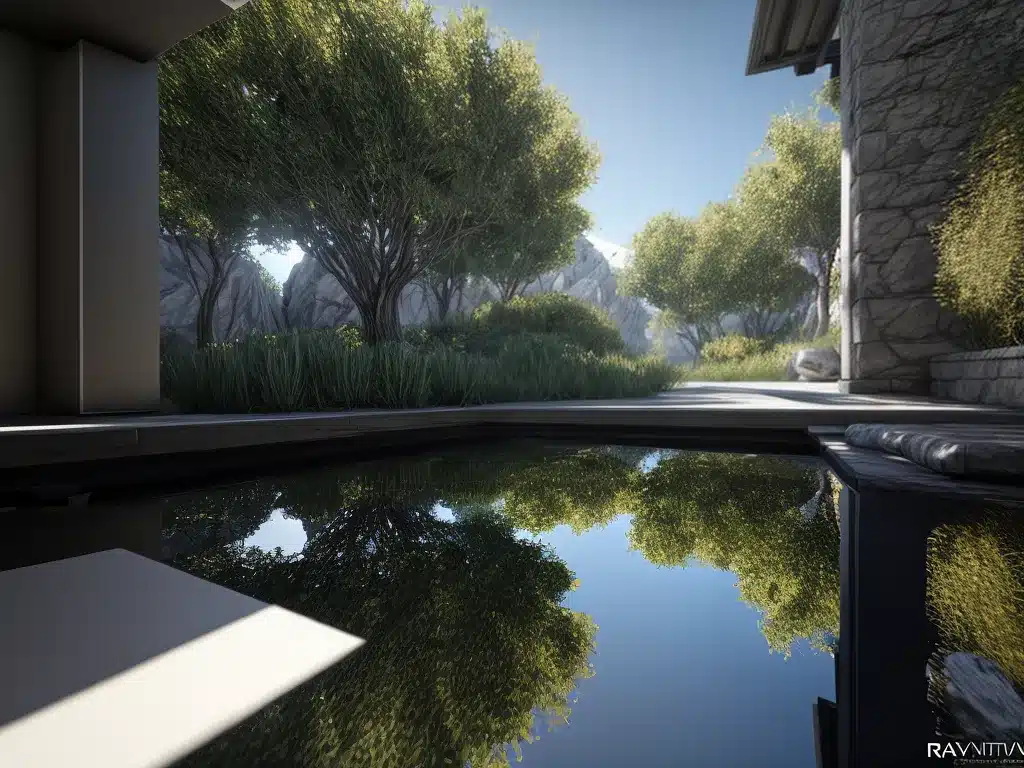
Introduction
Ray tracing has long been considered the holy grail for photorealistic rendering in computer graphics. Unlike rasterization, ray tracing simulates the physics of light to capture realistic lighting effects like reflections, refractions, shadows, and global illumination. However, ray tracing is computationally intensive and was traditionally limited to film and animation rendering. Recent advancements in ray tracing algorithms and GPU hardware have now made real-time ray tracing possible, bringing unprecedented photorealism to real-time graphics in video games and simulations. In this article, I explore the key innovations enabling real-time ray tracing and examine how it is revolutionizing real-time computer graphics.
Brief Background on Ray Tracing
Ray tracing mimics how light behaves in the real world. The basic idea is to trace the path of light rays as they interact with objects in a 3D scene. Rays are traced from the camera through each pixel and interacted with scene objects. Each ray can generate additional rays – for example when reflecting off a mirror or refracting through glass. Ray tracing accumulates these light contributions to determine the final color value for each pixel.
Key effects ray tracing can simulate:
- Reflections
- Refractions
- Soft shadows
- Ambient occlusion
- Global illumination
- Caustics
This physical accuracy comes at a performance cost. Where rasterization renders a scene by drawing triangles, ray tracing involves calculating complex intersections, reflections, and lighting for a vast number of rays. Rendering a single frame can take hours. For real-time applications like video games, rasterization is much faster, but lacks the realism of ray tracing.
Hardware Acceleration of Ray Tracing
The biggest factor enabling real-time ray tracing is dedicated ray tracing hardware built into modern GPUs.
NVIDIA RTX GPUs
In 2018, NVIDIA introduced RTX GPUs (Turing architecture) with dedicated ray tracing cores and AI acceleration. Some key capabilities:
- RT cores accelerate boundary volume hierarchy (BVH) traversal and intersection testing
- Tensor cores accelerate denoising algorithms to reduce noise
- Concurrent shading and ray tracing
This hardware acceleration dramatically speeds up ray tracing performance. For example, RTX 2080 can achieve 10 Giga Rays per second, 100x faster than CPU ray tracing.
AMD RDNA GPUs
In 2020, AMD added ray tracing support to their RDNA architecture GPUs:
- Ray accelerators boost BVH traversal and intersection testing
- Compute units handle shading and denoising
- Concurrent shading and ray tracing
RDNA 2 doubles ray tracing performance over first-gen RDNA. The 6800 XT can achieve up to 11.75 Giga Rays per second.
Consoles
The newest generation of consoles also integrate dedicated ray tracing hardware:
- PlayStation 5 – custom RDNA 2 GPU with ray tracing acceleration
- Xbox Series X – RDNA 2 GPU with ray tracing
Software Advances
Along with hardware, new software techniques have helped bring real-time ray tracing performance to acceptable levels.
Ray Tracing Algorithms
- Bounding volume hierarchies optimize ray traversal through complex scenes
- Denosing algorithms like NVIDIA DLSS remove noise while preserving image quality
- Hybrid rendering combines rasterization and ray tracing to focus rays where needed
- Resolution scaling renders rays at lower resolution then upscales
API Support
- DirectX Raytracing and Vulkan provide API support to access dedicated ray tracing cores
- NVIDIA OptiX and AMD Radeon ProRender provide ray tracing engines
Game Integration
Many game engines now integrate real-time ray tracing:
- Unreal Engine 4
- Unity
- Frostbite (EA)
They provide effects like reflections, shadows, global illumination, and ambient occlusion.
Real-Time Ray Tracing in Action
With the hardware, algorithms, and software support lined up, real-time ray tracing is now viable in games. Here are some examples:
Control
This supernatural adventure game uses ray-traced reflections, shadows, global illumination, and ambient occlusion to bring its surreal Brutalist environments to life. Ray tracing accentuates light and shadow to heighten the atmosphere.
Call of Duty: Black Ops Cold War
The latest Call of Duty relies on ray-traced shadows and ambient occlusion for greater immersion in its 1980s Cold War setting. Ray tracing enhances subtle lighting details.
Minecraft
The blocky, iconic Minecraft world takes on a whole new level of realism with path-traced global illumination, reflections, shadows, and textures. Ray tracing unleashes Minecraft’s photographic potential.
These and many other games showcase how real-time ray tracing can achieve cinema-quality lighting and reflections in interactive experiences.
The Future of Real-Time Ray Tracing
Ray tracing continues to rapidly advance – each new generation of GPUs pushes more ray tracing hardware and performance. NVIDIA has set an ambitious goal of achieving full cinematic-quality ray tracing in real-time graphics.
Some frontiers include:
- Photorealistic human skin and eyes
- Complex particle and fluid simulations
- Life-like hair and vegetation
- Dynamically destructible environments
- Instant light adaption for seamless transitions
As algorithms and hardware continue to mature, real-time ray tracing will become the new standard in games, simulations, and 3D applications – ushering in a new era of photorealism in computer graphics. The lines between pre-rendered and real-time graphics will increasingly blur. Ray tracing moves the limits of interactive experiences closer to cinematic films. Rather than a technological far-off dream, photorealistic graphics are arriving now.












